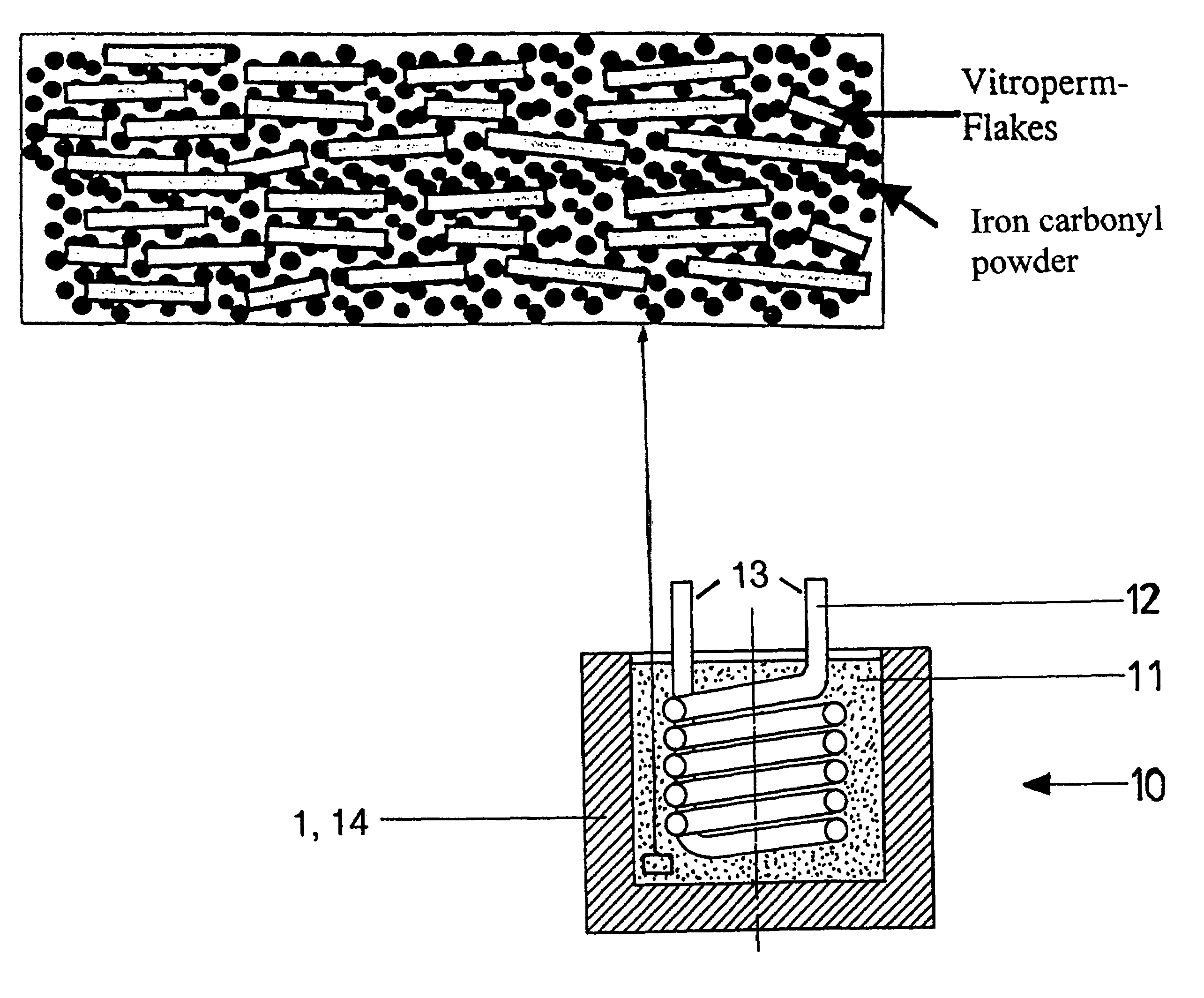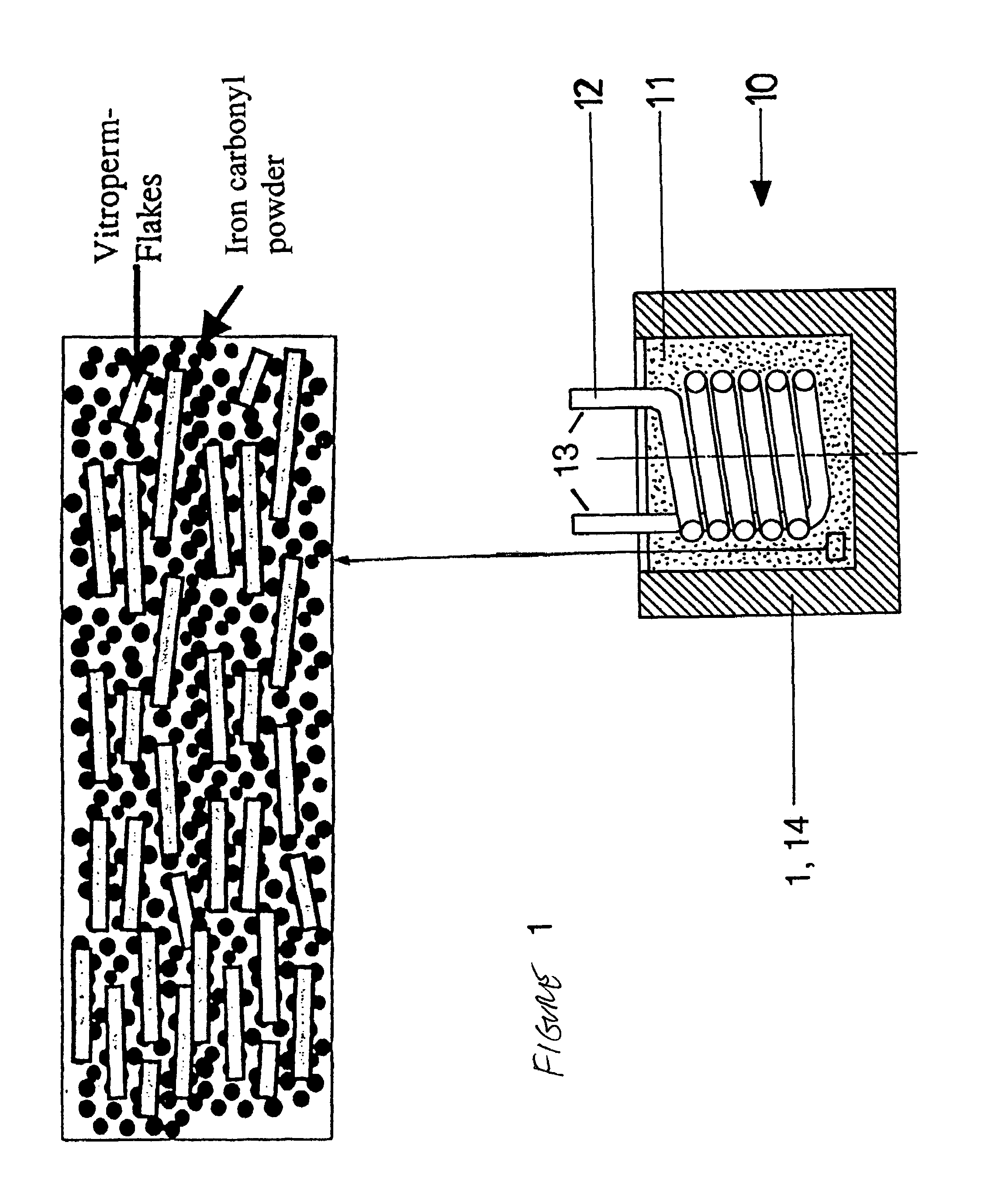Inductive component and method for producing the same
a technology of inductive components and components, which is applied in the direction of inductances with magnetic cores, transformers/inductances casings, coils, etc., can solve the problems of limited overall achievable permeability of inductive components, powder can be realized, and the maximum packing densities of powder composites are only about 55 volume %, etc., to achieve large increase in iron losses, increase in coercitive field intensities, and high ferromagnetic packing
- Summary
- Abstract
- Description
- Claims
- Application Information
AI Technical Summary
Benefits of technology
Problems solved by technology
Method used
Image
Examples
Embodiment Construction
[0019]In one embodiment, inorganic powders, for example ferrite powders, are used as ferromagnetic dielectric powders. The ferrite powders are typically produced from sintered ferrite parts by grinding in suitable mills.
[0020]In particular, Mn—Zn ferrites (for example, N 27 ferrite) have proven to be particularly suitable on account of their high saturation induction.
[0021]In another embodiment, surface-insulated metallic powders are used. In particular, ferromagnetic metal carbonyl powders have proven to be exceptionally suitable. It is also possible to use iron carbonyl powder, nickel carbonyl powder, or cobalt carbonyl powder, as well as mixtures of these carbonyl powders.
[0022]The iron carbonyl powders are ultrapure iron powder produced by the “carbonyl process.” Iron pentacarbonyl is produced from iron powder and carbon monoxide at elevated pressure and temperature. The iron carbonyl thus produced is subsequently separated from impurities by vacuum distillation, and then decomp...
PUM
| Property | Measurement | Unit |
|---|---|---|
| particle size | aaaaa | aaaaa |
| particle size | aaaaa | aaaaa |
| particle size | aaaaa | aaaaa |
Abstract
Description
Claims
Application Information
 Login to View More
Login to View More - R&D
- Intellectual Property
- Life Sciences
- Materials
- Tech Scout
- Unparalleled Data Quality
- Higher Quality Content
- 60% Fewer Hallucinations
Browse by: Latest US Patents, China's latest patents, Technical Efficacy Thesaurus, Application Domain, Technology Topic, Popular Technical Reports.
© 2025 PatSnap. All rights reserved.Legal|Privacy policy|Modern Slavery Act Transparency Statement|Sitemap|About US| Contact US: help@patsnap.com


